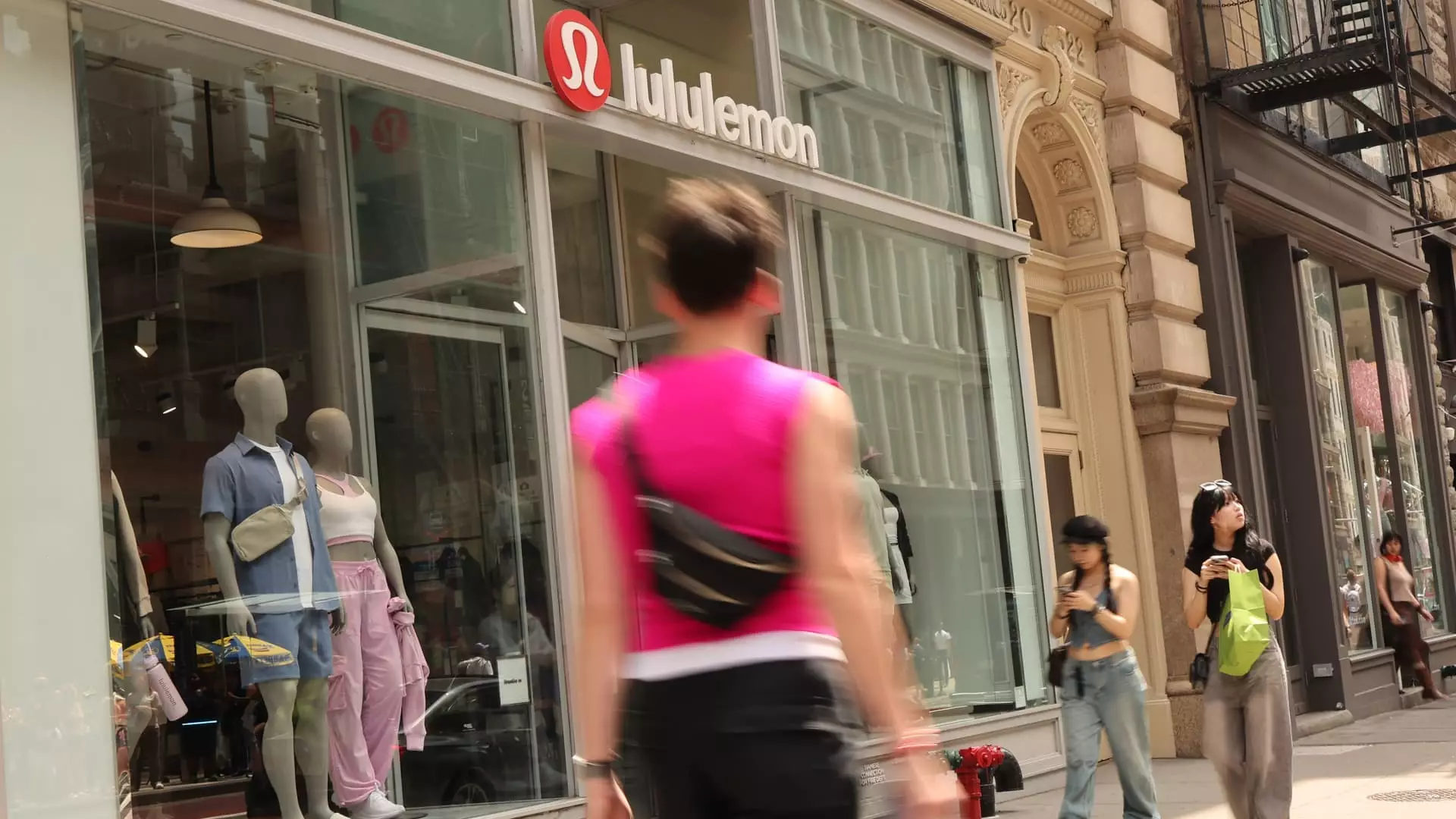In the face of economic turbulence, Lululemon Athletica has emerged with fiscal first-quarter earnings that exceeded Wall Street’s projections—albeit in the shadow of reduced full-year guidance. The results reflect not only the company’s robust performance but also the unpredictable landscape posed by global tariffs and fears of a contracting U.S. economy. CEO Calvin McDonald’s assertion that Lululemon aims to “play offense” amidst these challenges is telling. While this kind of proactive messaging might resonate with analysts and investors alike, the reality is that even the most celebrated brands can find themselves walking a tightrope between expansion and economic pressure.
Lululemon reported earnings per share (EPS) of $2.60, marginally above expectations of $2.58, alongside a revenue increase to $2.37 billion from $2.21 billion during the same period last year. Yet, it’s vital to scrutinize the implications of cutting full-year expectations from an earlier forecast of $14.95 to a new projection of $14.58 to $14.78. Such adjustments signal more than just conservative forecasting; they communicate an underlying anxiety within the marketplace, a warning that even well-performing companies are not immune to external fiscal volatility.
Market Response: A Shock to the System
Initially, Lululemon’s optimistic results were overshadowed by a 20% plummet in shares during extended trading. This dramatic reaction speaks volumes about Wall Street’s expectations versus emerging realities. Investors appear to be reacting not only to Lululemon’s current numbers but are also factoring in broader market trends. The apparel sector has faced a barrage of struggles due to evolving tariff policies, particularly in the wake of President Trump’s administration, which raised the specter of price hikes and tighter margins across the board. This turmoil is echoed in the grim outlooks from other high-profile retailers, such as Macy’s and Abercrombie & Fitch, both of which adjusted their profit forecasts downward.
The retail landscape is effectively at a crossroads; economic concerns are forcing companies to reevaluate their strategies. While Lululemon shows resilience, rivals in the athleticwear space are cautious, responding by inflating prices or withdrawing guidance altogether. The ramifications of these economic pressures extend beyond Lululemon. Athletic giants like Nike and Gap are making strategic shifts, reflecting a reality where profits are impacted far more than anticipated as they blindly navigate a complex international trading framework.
International Manufacturing: A Double-Edged Sword
Lululemon’s reliance on international manufacturing is another critical piece of this puzzle. With 40% of its products sourced from Vietnam and significant contributions from other countries like Cambodia and Sri Lanka, the company’s dependency on global supply chains makes it particularly vulnerable to external shocks. The narrative of globalization often champions efficiency and cost-effectiveness, but the current economic climate provides a stark reminder that these advantages come with significant risks.
As organizations contemplate their supply chain strategies, Lululemon’s experience underlines the importance of agility in manufacturing and distribution. The company has traditionally been lauded for its ability to pivot; however, when unforeseen barriers like tariffs interrupt the flow of products, that agility is put to the ultimate test.
Future Outlook: A Need for Strategic Resilience
Analyzing Lululemon’s future outlook becomes essential, particularly in the wake of reduced second-quarter earnings guidance. Analysts project EPS of $2.85 to $2.90, well below expectations of $3.29. Furthermore, the modest increase in comparable sales of 1%—far from the anticipated 3%—indicates waning consumer enthusiasm. Adjustments to full-year revenue forecasts leave many wondering if the brand can maintain its momentum amid shifting consumer spending habits.
In grappling with the complex realities of today’s economy, Lululemon must cultivate strategic resilience. Rather than just positioning itself defensively against macroeconomic threats, the company needs to harness its reputation and customer loyalty to proactively address these challenges. The evolving retail landscape requires innovation—not just in products, but in pricing strategies, marketing, and ultimately, how the company perceives the interplay between growth opportunities and present adversities.
The apparel market is at a juncture that demands consumer awareness and corporate responsibility, and brands must rise to the occasion or risk losing their footing. Lululemon’s drive to innovate and adapt may well determine how successful it remains as a leader in the increasingly competitive world of athleisure. In light of these intricate factors, the financial future lies uncertain, perhaps more than Lululemon would like to admit, urging a critical eye on what lies ahead.

Leave a Reply